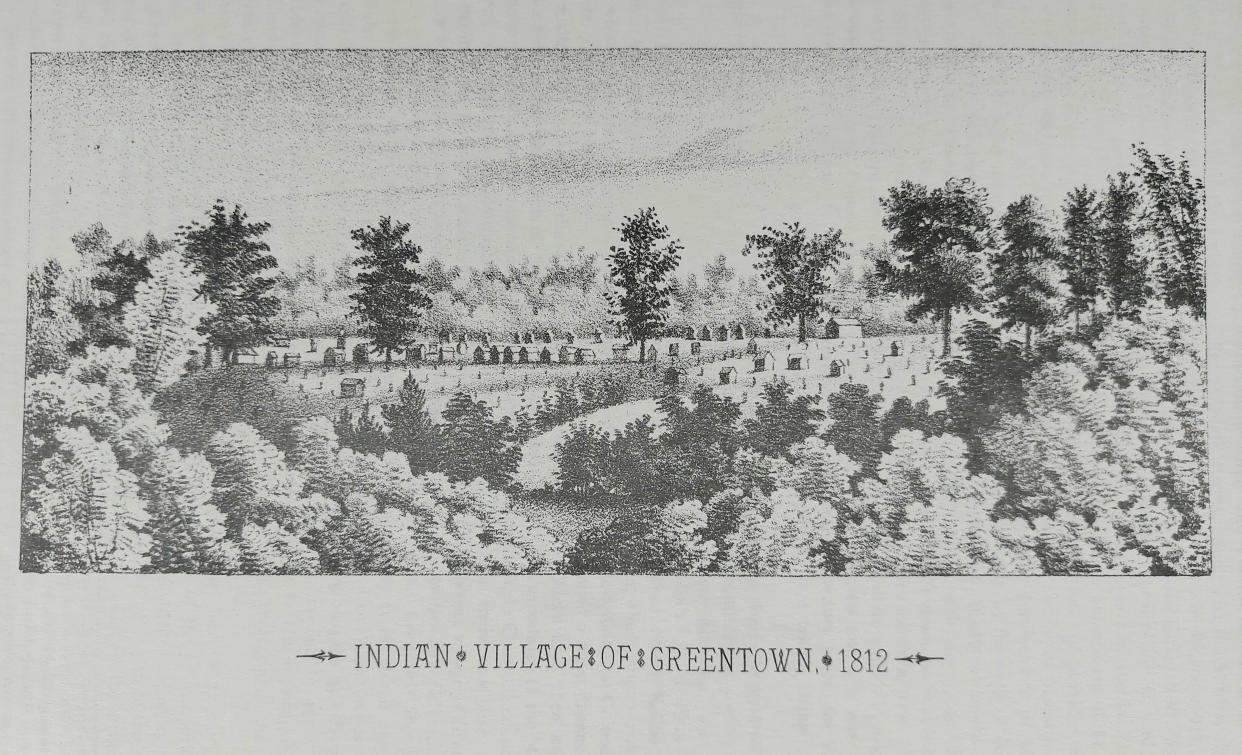ASHLAND MEMORIES: Native Americans greeted early Ashland settlers

A handful of white settlers arrived in this area beginning in 1809, but Native Americans had inhabited two nearby villages, Jerometown and Greentown, since the time of the Revolutionary War. By 1812, some of the new settlers made an effort to get to know the Native Americans, while others kept their distance.
More: ASHLAND MEMORIES: Ashland and the War of 1812
One early historian concluded that “…history teaches us that the Indian is cruel, deceitful and blood-thirsty by nature and devoid of the redeeming traits of humanity.” However, the early settlers recorded stories about their interactions with the local Native Americans that do not bear out this statement.

Jerometown was located less than a mile from the farm of Jean-Baptiste Jerome, on a creek still known as Old Town Run. The leader of that village was Capt. Pipe, an aged Delaware who had opposed White encroachment all his life, and had finally settled down into a kind of retirement.
The other village was Greentown, located on the north bank of the Black Fork, about three miles west of present Perrysville. It covered three or four acres. There were about 150 to 200 families living in Greentown in pole cabins. There was also a larger council house built of logs at the center of the village.
Greentown named after Thomas Green, a white man from Connecticut
Greentown had been inhabited from approximately 1782 to 1812. It was named after Thomas Green, a white man from Connecticut. Because he was a Tory, loyal to the British during the American Revolution, he had fled to the Ohio territory where he made a home with the Delawares in a village named in his honor.
The residents of Greentown included Thomas Lyons, Billy Montour, Thomas Jelloway, and Billy Dowdee.
The leader of the village was Capt. Thomas Armstrong, also known as Pamoxet, of the Turtle clan of the Delaware. He was approximately 65 years old when the early Ashland settlers met him.
Among the settlers who maintained a friendly relationship with their Native American neighbors was James Copus, who was a devout Methodist. He went to preach at Greentown several times, and he and others were invited to traditional ceremonies and feasts held in the village.
Sometime in 1812, Allen Oliver received a memorable visit from the Delaware Billy Dowdee, who dropped by with his wife and six or seven little children., who were very hungry. Dowdee offered one buckskin in exchange for a large pot of mush and milk, which Oliver provided. The children ate until they could not hold any more.
“Old Tom Lyons,” was another resident of Greentown. He claimed to be 150 years old. Since he counted winter and summer each as a year, he was likely about 75 in 1809. He had been born in New Jersey, on the Delaware line, and had moved westward through the 18th century, when he was active in Native American resistance to European encroachments.
There was a feast held at Greentown in the fall of 1811, attended by three or four hundred Delawares and other Native Americans, as well as some early Ashland settlers. The settlers recalled that Capt. Pipe of Jerometown gave a moving speech at that gathering. They estimated him as being about 70 years old.
This article originally appeared on Ashland Times Gazette: ASHLAND MEMORIES: Native Americans greeted early Ashland settlers

